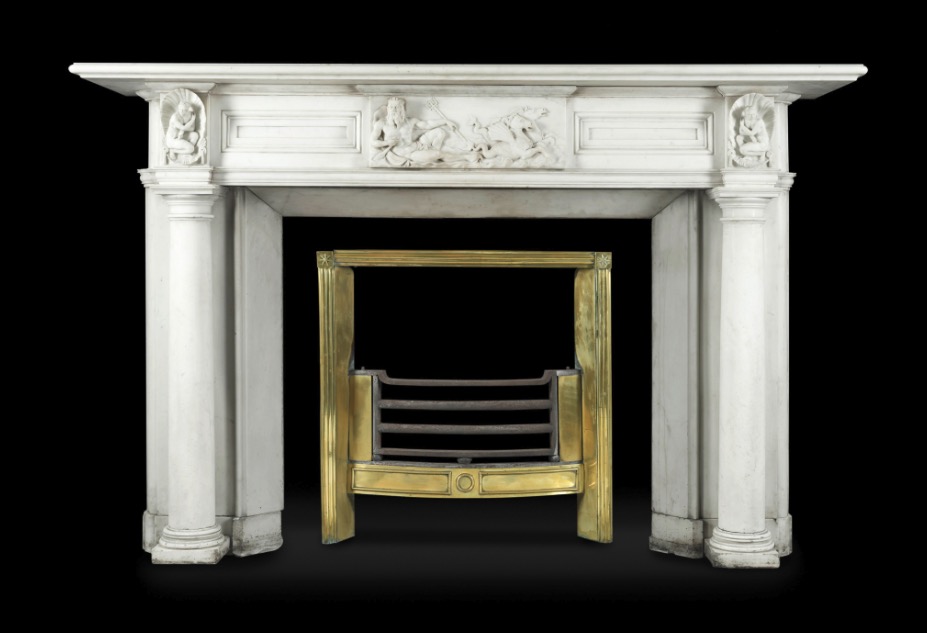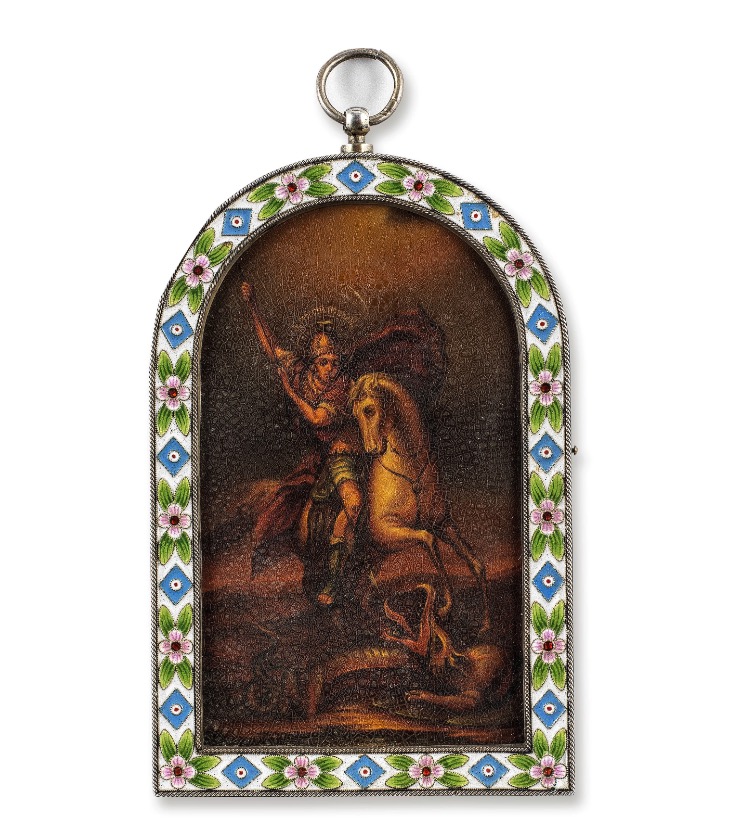Ahead of The Connoisseur’s Library auction on 7 and 8 February, our specialists pick out seven exceptional lots and reveal the stories behind them. The sale features lots from a multitude of departments, including Books and Manuscripts, Scientific Instruments, Furniture, Russian Paintings and Works of Art, Carpets, Rugs and Tapestries, Silver alongside Sculpture and Works of Art.
Lot 633 A good cased Victorian silver and parcel-gilt ‘Osborne House’ castle top card case

Cecile Shannon, Silver Specialist: The Connoisseur’s Library Sale is always a fun sale to curate, containing an array of silver items which are not only collectible and visually appealing, but often practical. Whether you are a traditionalist or of a more contemporary persuasion, there is something for everyone, covering every price range. It features a myriad of items to personalise your home, from silver desk accessories for the office, a silver tortoise bell to summon the children for dinner, to drinking paraphernalia for use after a hard day! The Library theme encompasses wholesomeness and a life well lived; the outdoors, countryside pursuits, birds and animals, as well as the country house aesthetic.
Among the practical yet beautiful accessories on offer, is a particularly fine Victorian silver and parcel-gilt ‘castle top’ card case, dated 1857. Used for holding calling cards, it is finely engraved with a depiction of Osborne House on the Isle of Wight, the favourite rural retreat of Queen Victoria and her family. Osborne House is one of the rarer stately home’s depicted on ‘castle top’ card cases, which makes this one highly desirable—to collectors of ‘castle top’ card cases, subject matter is everything.
In the Victorian era, ‘castle top’ silver vinaigrettes and card cases were first fashioned by the silver ‘toy’ makers of Birmingham and decorated with embossed or engraved ornamentation of a local landmark, such as a stately home or a castle. There is often a vacant cartouche to the reverse, in which the owner could get their initials (or the initials of a loved one) engraved. First and foremost, these beautifully designed items were made as beloved souvenirs for the Victorian tourist. However, the case had a dual function, as the visiting or calling card which they contained was an essential accessory to any proper Victorian lady or gentleman, and the cases in which they were carried were viewed as status-enhancing accessories—much like having the latest iPhone! Given ‘castle top’ silver souvenirs were at their height of popularity between 1830 and 1860, the short time period of manufacture makes them relatively rare. Therefore good examples, like this one on offer, are highly prized.
Lot 211 An important Irish George I walnut and featherbanded, sycamore, cedar and marquetry ‘architectural’ secretaire cabinet

Thomas Moore, Head of Furniture: This magnificent cabinet is one of an important group of four similar Irish, early-18th-century walnut examples—which all feature in Irish Furniture by The Knight of Glin and J. Peill. According to the authors of this seminal book, these cabinets are undoubtedly of Irish origin, a proposition first put forward by the esteemed furniture historian, academic and author, R.W. Symonds, in an article he wrote in 1956.
It was previously believed that one of the three related models had originally belonged to writer Jonathan Swift (1667–1745). However, this is a view (also supported at the time by Symonds) which has been disproved in more recent years as a romanticised notion, based upon a barely legible inscription found inside that piece.
Although the cabinet makers responsible for executing three of these cabinets—including the above—are unknown, the remaining one within this group of four is in fact signed by John Kirkhoffer, who was a German émigré to Dublin. This raises the exciting possibility that Kirkhoffer also made the present example.
Lot 284 An impressive George III carved white marble chimneypiece

Michael Lake, Head of European Sculpture and Works of Art: This George III white marble chimneypiece with its timeless style, classical imagery and impressive scale is undoubtedly a highlight in this year’s Connoisseur’s Library sale.
By repute, the chimneypiece was installed at Raheen House, Tipperary, in the south of Ireland by the Burke family in 1889. The fireplace was acquired by the Burkes in lieu of a part payment for a warehouse. The building was re-purposed at a later date by the Loreto Convent of Clonmel to be used as a religious school. The Loreto convent was an order of Cistercian nuns founded by Mary Ward (1584–1645), who set up a number of schools all over Europe in her lifetime to further the higher education of Catholic women. The Clonmel Convent school was not set up until 1881 and was located next to the Suir Island Flour Mill. This building was damaged by fire in 1889, which is most likely the reason why this chimneypiece was removed and subsequently offered as a part payment to the Burke family.
However, it is possible that the chimneypiece, given its elegance and grandeur, may have been brought to Clonmel from a previous location—either from the Loreto Orders Convent school in Dublin or possibly even gifted by a rich Irish or English benefactor.
Lot 393 A miniature silver and cloisonné enamel icon of St George & the dragon

Daria Khristova, Head of Russian Art: This miniature enamel icon was created by the firm of Pavel Ovchinnikov, which was at the forefront of enamel works. The masters of the Ovchinnikov firm were among the first to create enamels in various techniques and of high complexity. They produced numerous items in the old Russian style: kovshes, charkas and, of course, oklads for icons. These enamels became the most sought-after for their unique colour combinations.
















































